These small apartment ideas will give even the most compact spaces a new lease of life
If space is at a premium, these small apartment ideas can help your home feel roomier, brighter and airier

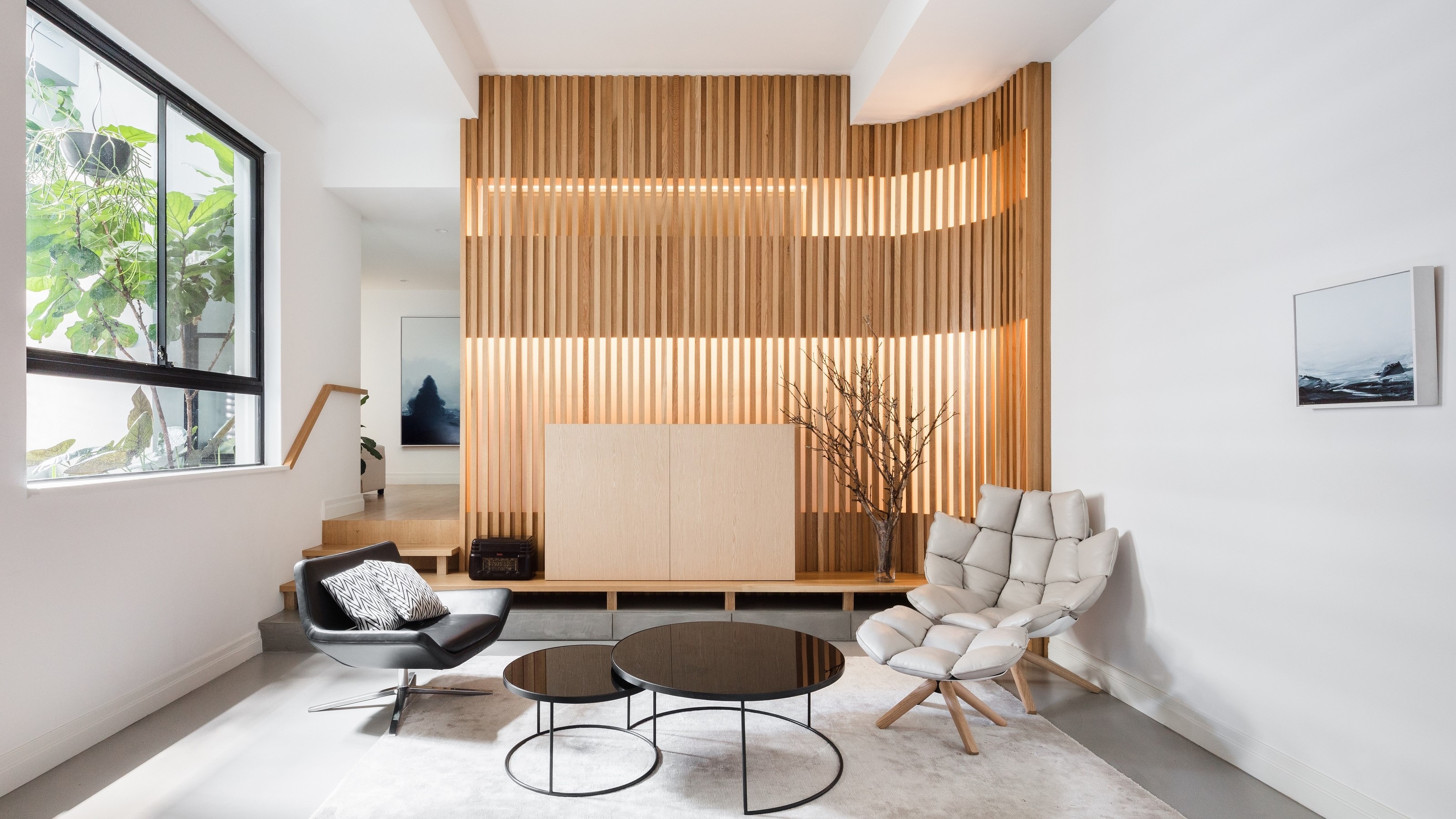
Living in a small apartment comes with a unique set of challenges. How do you zone the space to give different parts of the home a unique purpose? How can you decorate without it feeling too cluttered? How can you make the home feel cozy without it feeling cramped? How can you create storage that is functional and not unsightly? There are so many questions that homeowners must face, but there are always solutions. From the initial design stage through to when you’re accessorizing your home, there are many decisions you can make throughout to help your square footage stretch further.
We encourage you to take up the challenge, embrace small-scale living, and see your home as a project you can work on to tackle the issue. Read on for our tips to help you decorate an apartment you love to live in.

Hugh is an experienced homes writer and editor. He has written hundreds of articles for various titles helping readers make the best home design choices, and spends his days interviewing interiors industry experts to bring the latest ideas to his readers. For this piece he spoke to the world's best designers and studios who have created some of the most show small apartments, so as to get the most up to the minute advice.
Small apartment ideas
When planning how to decorate a small apartment, it's not just about space, it's about how you play with light, decreasing visual clutter and using color in clever ways. Read on for our suggestions for how to make your apartment look larger.
1. Use furniture to zone the space
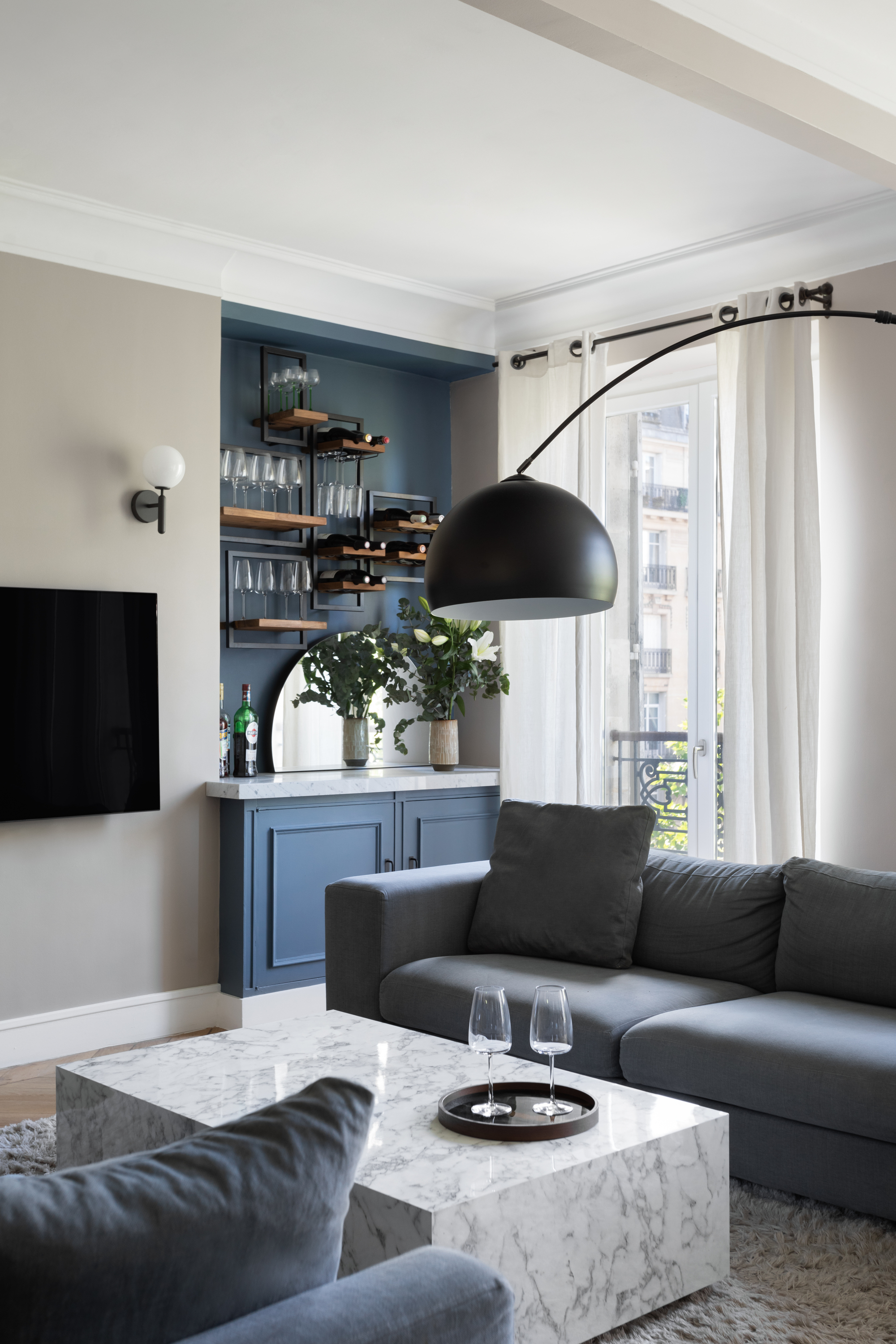
If you have an open plan set up in your apartment, and your living space is your dining area, kitchen and home office all rolled into one, it might be tempting to have your furniture sit flush around the walls - as you naturally might do. But for one large room that has to be all singing, all dancing, rethink your furniture placement to help zone the space and help distinguish each area of the room.
Don’t be afraid of protruding furniture into the room, as you can create mini pockets and snug corners either side. For example, a bookshelf that comes in from the wall might corner off a cozy corner that can work as your home office. Furthermore, sofa backs are so often pushed against the wall, but use that sofa back to demarcate the living area zone, pointing towards a wall to make snug. Alternatively, float your furniture and have it sitting away from the wall so you create a little walkway, as depicted here by the designers at Atelier Varenne. Get clever with your furniture, how you use it and the space will transform before your very eyes.
2. Consider how you decorate
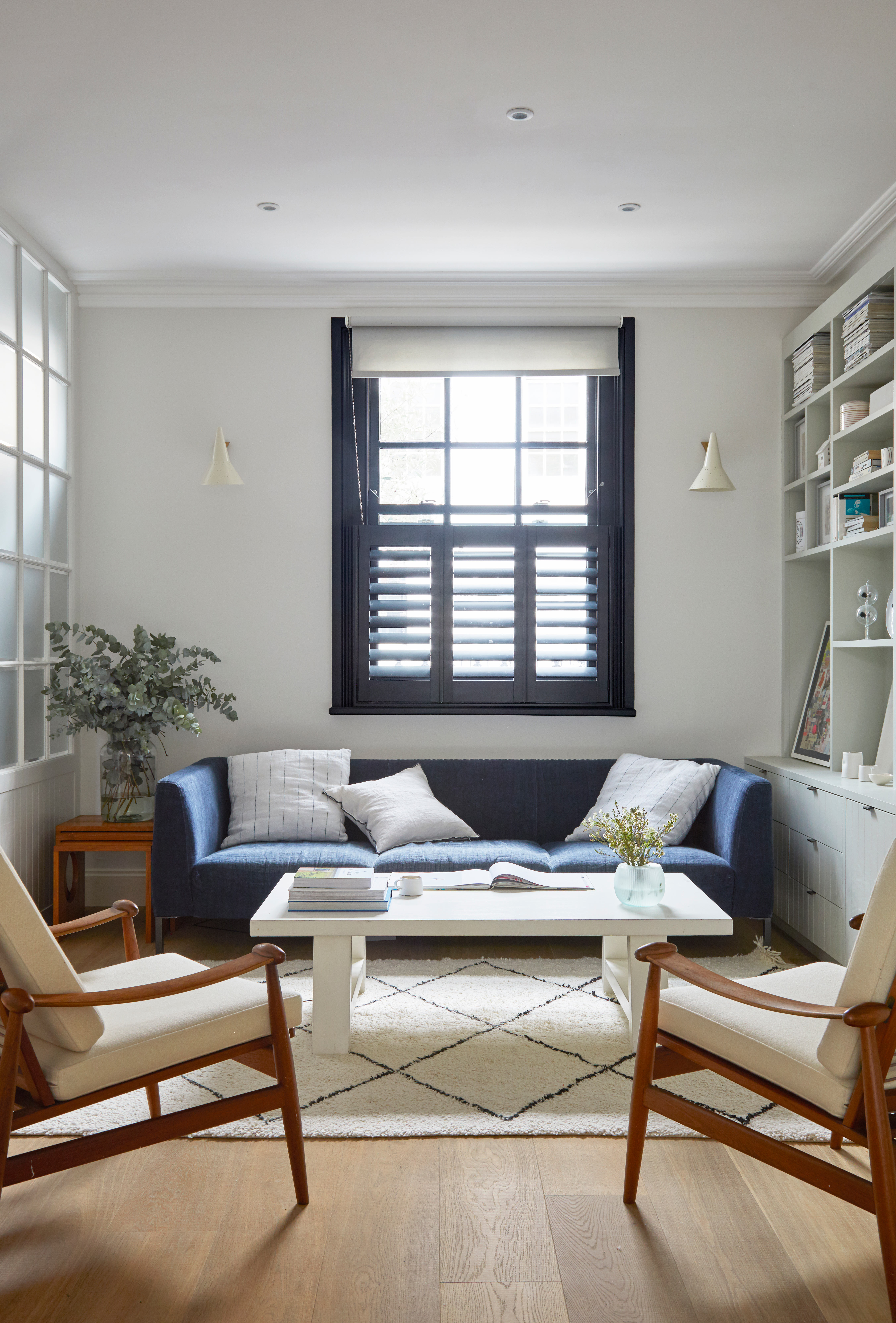
You might have to really reconsider how you decorate in your small apartment, as anything excessive can create visual clutter that only contributes to a feeling of cramped space. Take notes from the Scandinavian or minimalism disciplines of design and try and remove items that are not serving their purpose and being efficient and functional. Try to go for simple objects that have a cohesive color scheme, and make sure they contribute to the wider color scheme.
You don’t want to rid your space of decor entirely, sometimes, it’s as simple as adding a bowl of fruit to a table while it’s not in use, or adding a touch of the botanical with an indoor tree or plant. Where objects might be aesthetically jarring in an already cramped space, a touch of the botanical can help you feel at ease and bring calming qualities to a small space. Just think carefully about what plant you invest in, as if you’re lacking sunlight, it might not flourish particularly well.
The Livingetc newsletters are your inside source for what’s shaping interiors now - and what’s next. Discover trend forecasts, smart style ideas, and curated shopping inspiration that brings design to life. Subscribe today and stay ahead of the curve.
3. Use paint in a clever way
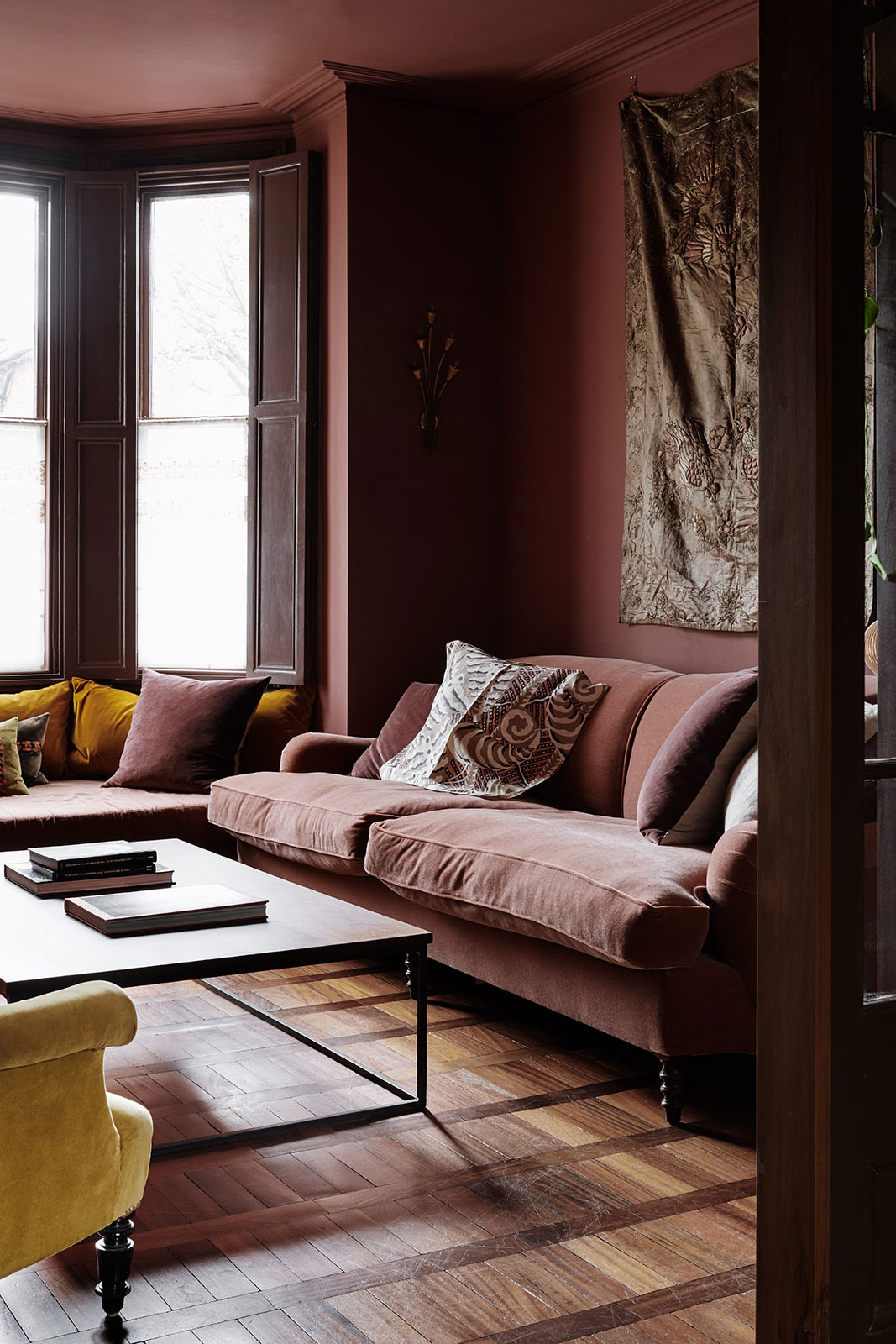
Another way to cleverly zone the space is through the use of paint. Don’t be afraid of color to make the room feel bigger and brighter. 'The use of a bold pop of color in a small space will make it feel ten times larger,' the designers at Interior Fox explain, 'especially when carried onto the ceiling.
Color actually adds depth to your walls when oftentimes our clients think the opposite.' You might not want to go for a monochromatic look with your paint, but a mere darker-colored accent wall might help trick the eye in a small apartment. Dark colors recede from the viewer, so the accent wall visually enlarges the space and creates contrast which makes a room seem brighter.
You also might want to think about how paint helps zone areas in the home. If your kitchen and living area is one place, consider taking the tone of your living room walls and going one shade lighter or darker. Take your new paint color and mark the kitchen area by taking the paint up the wall and even along the ceiling. The difference will be subtle, but help you feel like you’re breathing a fresh lease of life in a new room through simple optical illusions.
4. Consider flooring in a small apartment thoughtfully
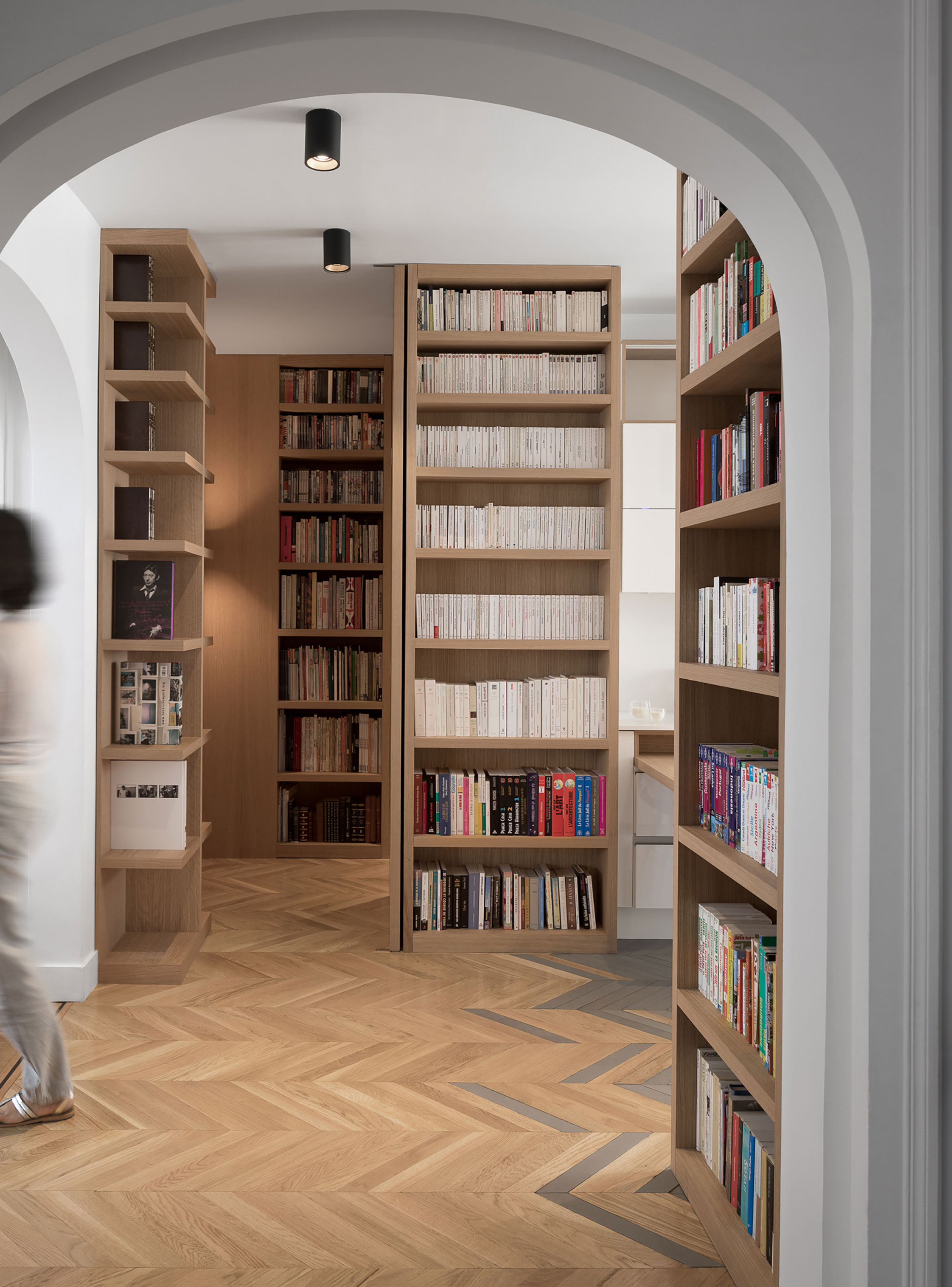
If you're starting an apartment renovation from the bottom up, choosing a good foundation for your space with the right flooring is important. ‘In general flooring in an apartment is always a challenge,' says Nathalie Rozencwajg, founder of Name Architecture. 'Especially when spaces are small, we like to avoid too many different materials.'
An apartment design with one type of flooring running throughout isn't uncommon to see, especially for hardwood or tiles. Yet, where practicality demands or there's the chance to zone a different area in your apartment through a different flooring finish, there are ways to make it work.
'The floor joint is a difficult design detail to get right,' explains Nathalie, 'but when necessary, we try to overcome this issue by maintaining a relationship between the various flooring materials. This might be color, size, or proportion for example.’
The transition between hardwood and tile flooring is a key feature of this 400 square foot Parisian apartment. The designers took much time to source a tile that would match the shape and size of the original wood floor for the small kitchen flooring idea, then drew the layout carefully to ensure a transition that would both look random and harmonious.
5. Be smart with lighting choices for compact spaces
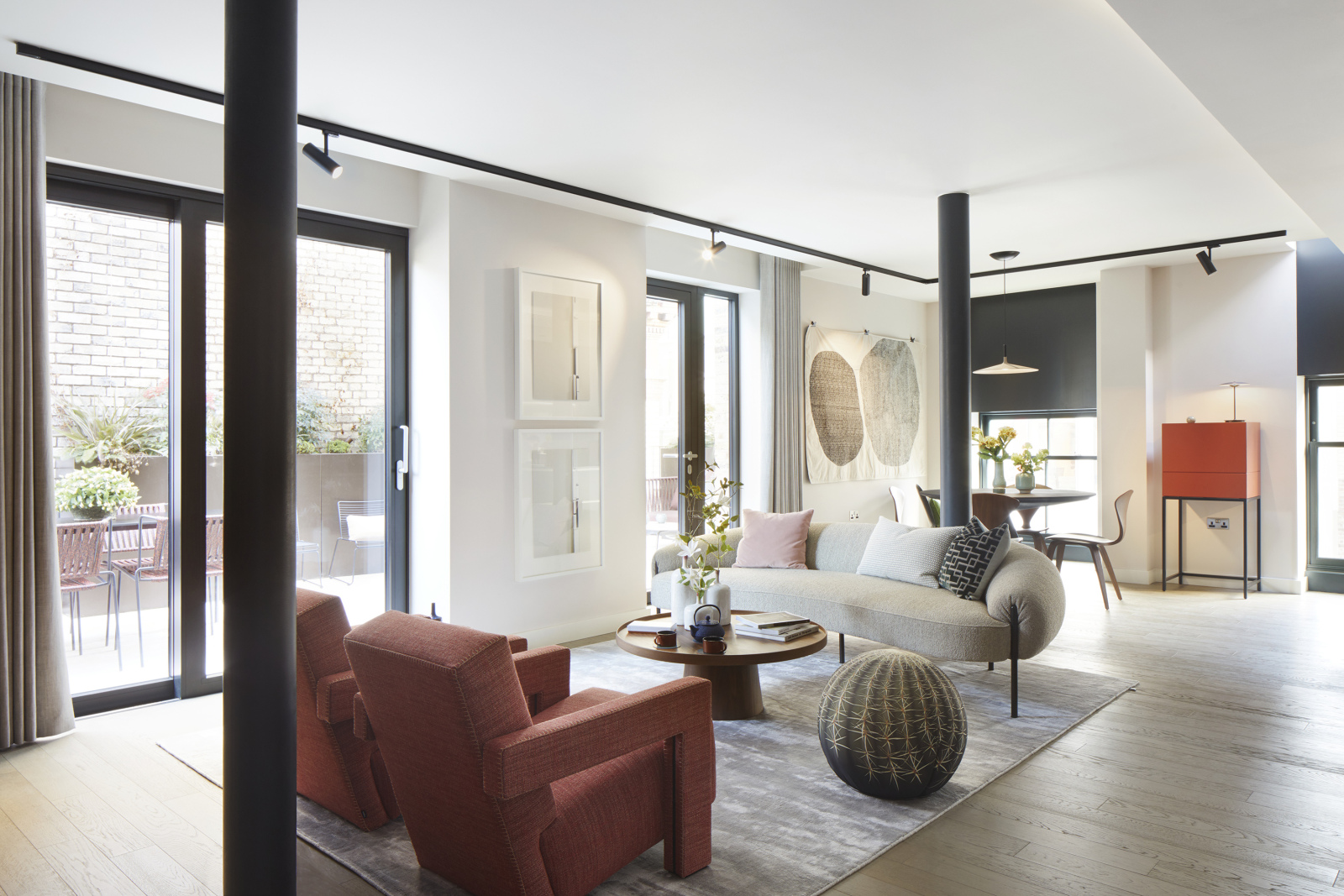
It's worth spending time thinking about your lighting in a small apartment design. It may be that when it comes to what's overhead, you're stuck with what you're given. In some apartments, especially in New York, the building doesn't provide ceiling provisions to install light fixtures.
That means you're left to make your lighting scheme work with floor lamps and table lamps, and by incorporating LED lighting where you can into the likes of furniture and kitchen cabinet lighting ideas.
If you do have the ability to install lighting overhead, consider your options. In a small space, pendant lights can be obtrusive, so opting for ambient and task lighting through ceiling downlights, ceiling-mounted spotlights or flush designs can help your space feel more open.
If you're set on a layout and aren't going to change it, a pendant light is more appropriate over a dining table, or a kitchen island if you have room for one.
6. Make use of concealed storage

After the absolute essentials you need in your apartment, storage space is likely to be high on the agenda, but thankfully there are increasingly clever ways to add more storage to a space.
'I'd start by creating the basic furniture layout and then start thinking of opportunities to add concealed storage,' says interior designer Ahmad AbouZanat. For a small apartment, investigate furniture that doubles up with a storage function. There are plenty of sofas and beds which offer generous storage underneath, reclaiming a huge amount of storage space from these floor space guzzlers.
Built-in storage is an effective use of space, as it can be fitted bespoke to make sure you can use the full height of your room, packing in as much as possible, but this will make your space look smaller. When choosing freestanding pieces, opt for designs on legs. As a small living room storage idea, for example, this will allow you to see the floor underneath, something that creates the illusion of space.
7. Use built-in furniture to divide and conquer
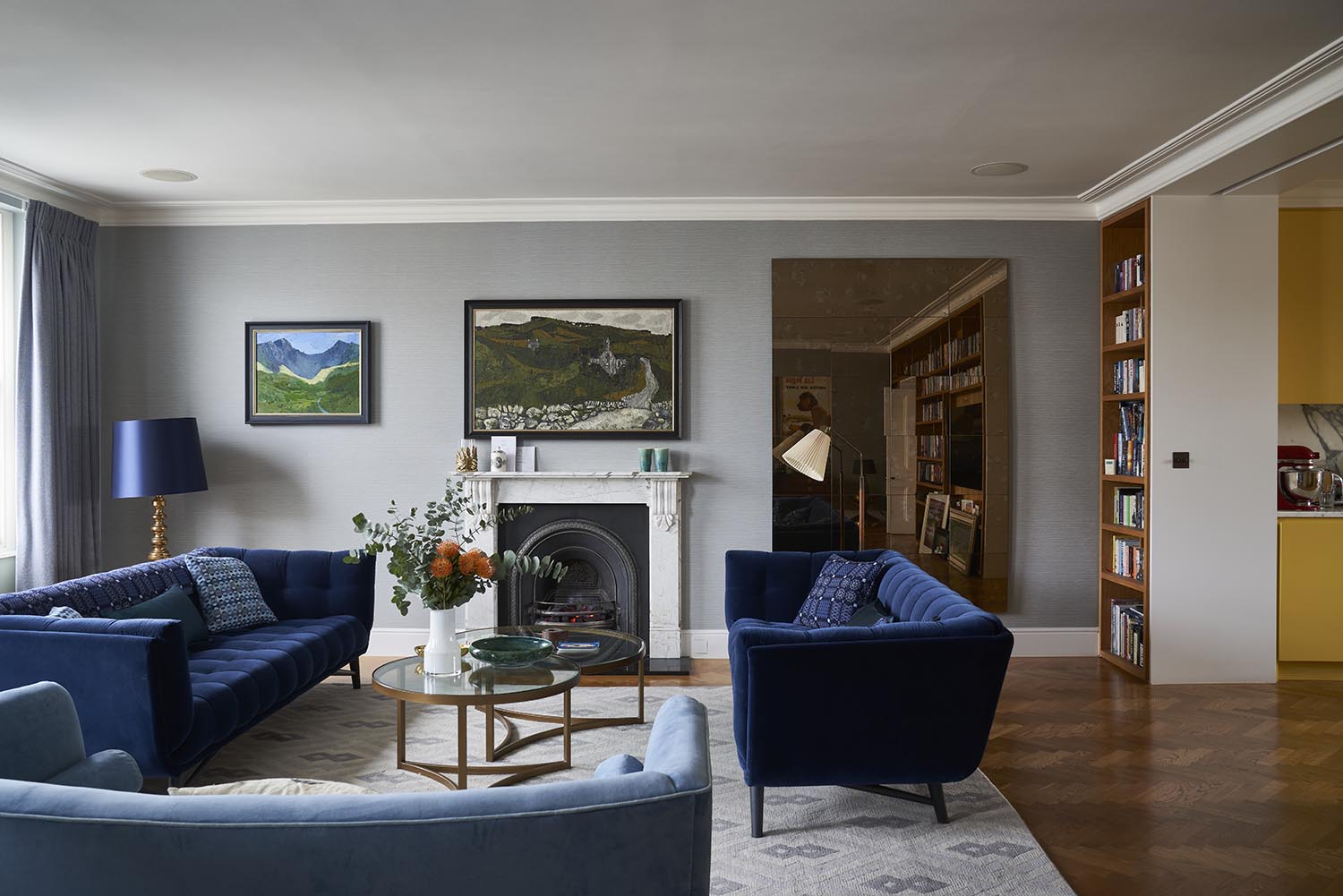
Room divider ideas are useful for separating spaces, even in a small apartment. However, when you're short on square footage, you need to be smart with selecting the right type of partition between rooms.
While you might think a simple glass screen is the most space-efficient option, it actually can eat up valuable useable space where storage furniture, bulkier though it may be, has more to offer to your apartment.
Dividing a small apartment with a bookcase or wardrobe gives you a two-for-one, providing both a privacy screen and storage. Consider designs that can be accessed from both sides to make them even more useful in your space, and if you're using an open shelving idea, be sure to style it so that it looks good from both the main apartment space and the bedroom.
8. Prioritize what's important in the kitchen
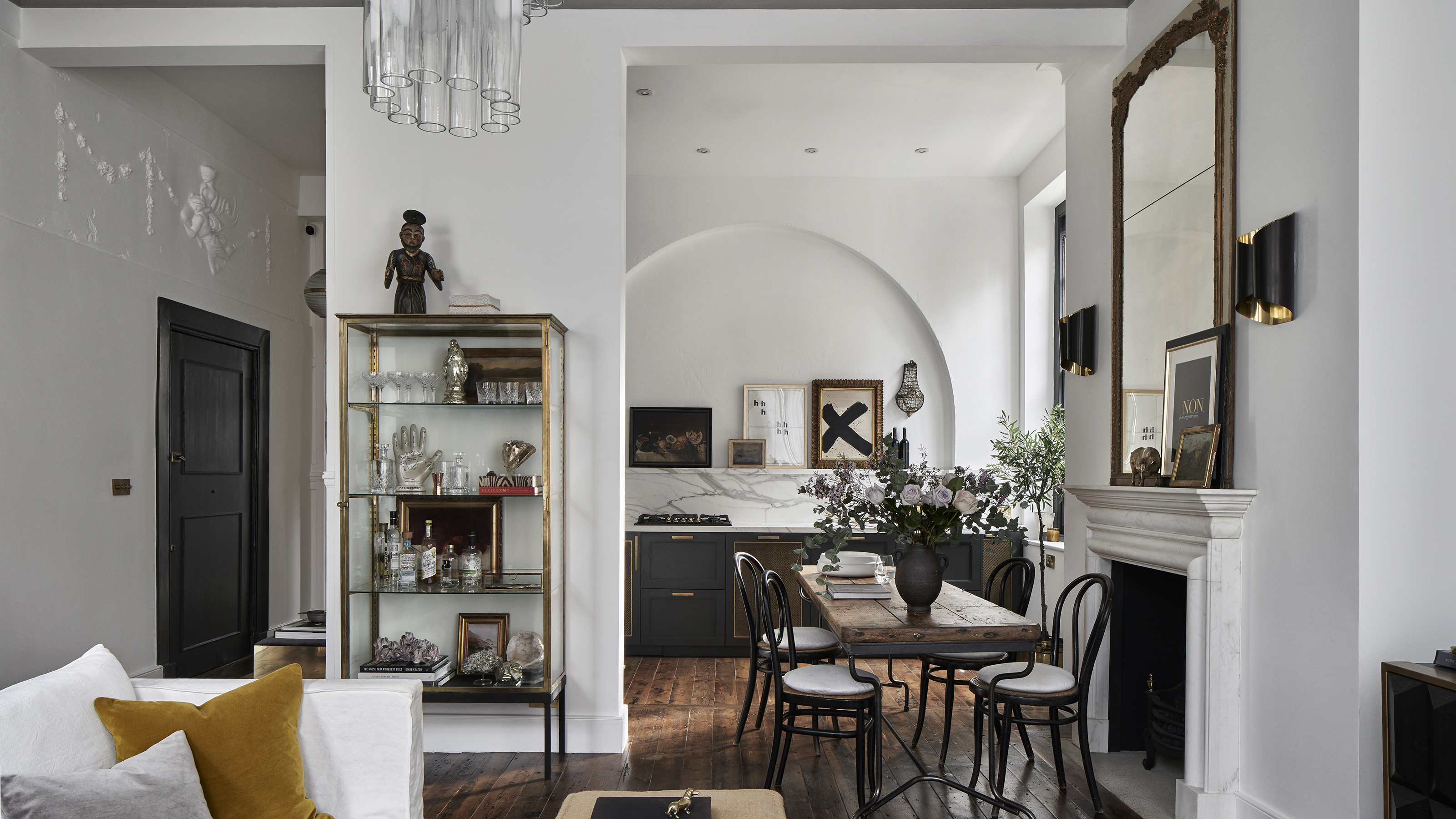
It's only natural to try and create as much storage in the kitchen as you can, but that might not be the best apartment kitchen idea when you're dealing with a small space. 'I believe that providing adequate worktop surface is the key to a successful smaller kitchen design,' says interior design Ahmad AbouZanat of PROJECT AZ. 'While storage is very important, there are ways or other places in the apartment that can be used for storage.'
The most important function of the kitchen is to prepare food, after all, and this is not something you want to have to do at the dining table because space is too tight. Credenzas or decorative cabinets in areas close to the kitchen can be used to hold dinnerware, cooking pots, and more.
'Of course, it’s tempting to have floor to ceiling cabinets and keep everything within proximity,' says Ahmad, 'but for a person who cooks or prepares at least one meal a day in their kitchen having the right amount of countertop space is invaluable.'
9. Plan pocket doors into your space
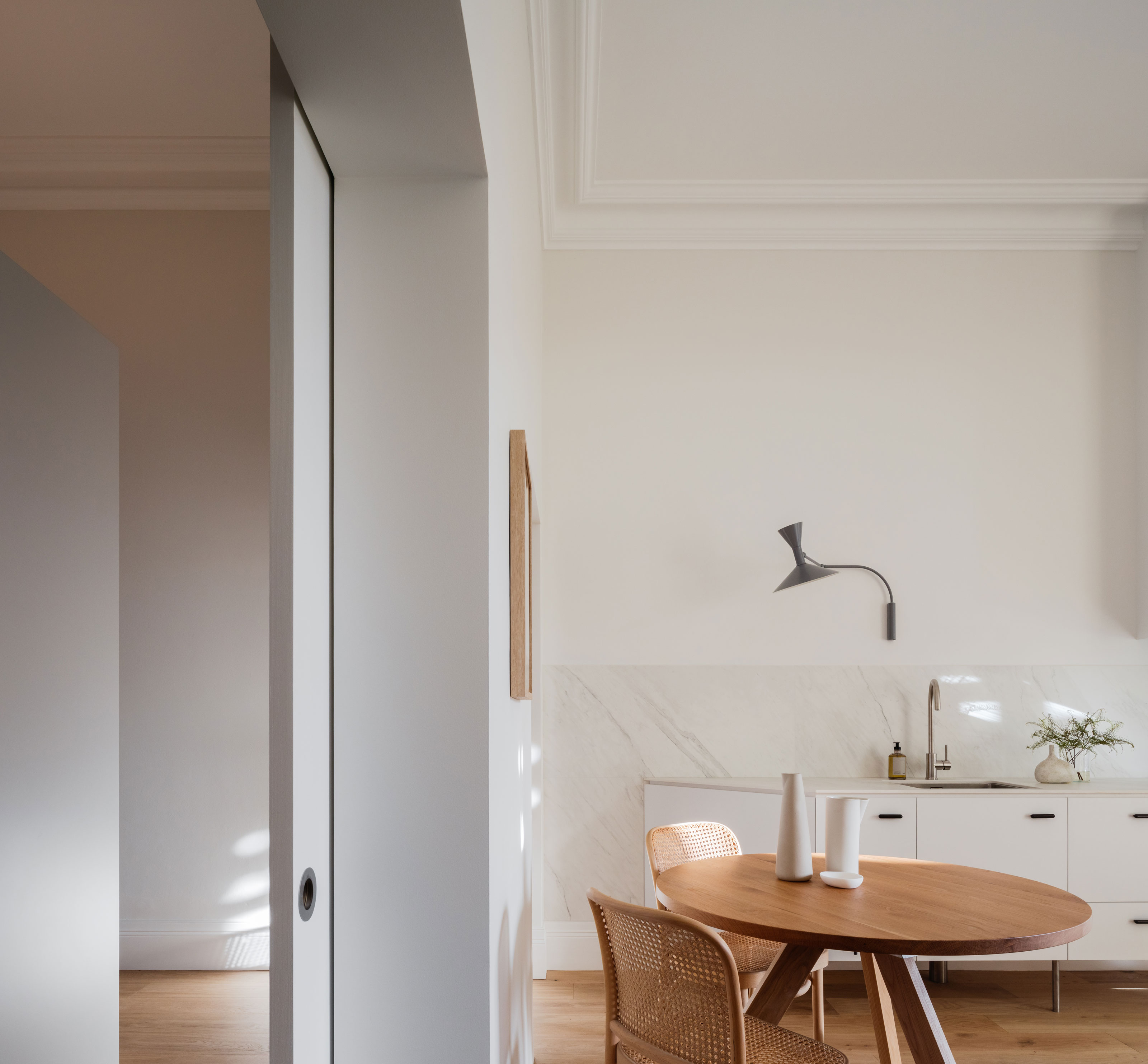
Creating good flow is as important in a small apartment as any space, but certain areas can cause issues when you're working with a limited footprint. Doors can be a particular problem, requiring clearance to swing open which can make navigating small spaces difficult.
Pocket doors are a brilliant solution for the likes of bathrooms, closets, and narrow hallway ideas, and if you can include them in your apartment renovation, they can be a real space saver. With doors that recess into the walls, they're not the easiest of things to install, especially when retrofitting, but for a new fit-out, they can provide the benefits of private spaces without the awkward nature of traditional hinged doors.
At just under 540 square feet, pocket doors were an essential feature of this basement apartment designed by Australian studio Brad Swartz Architects.
10. Utilize new ideas for flexible living
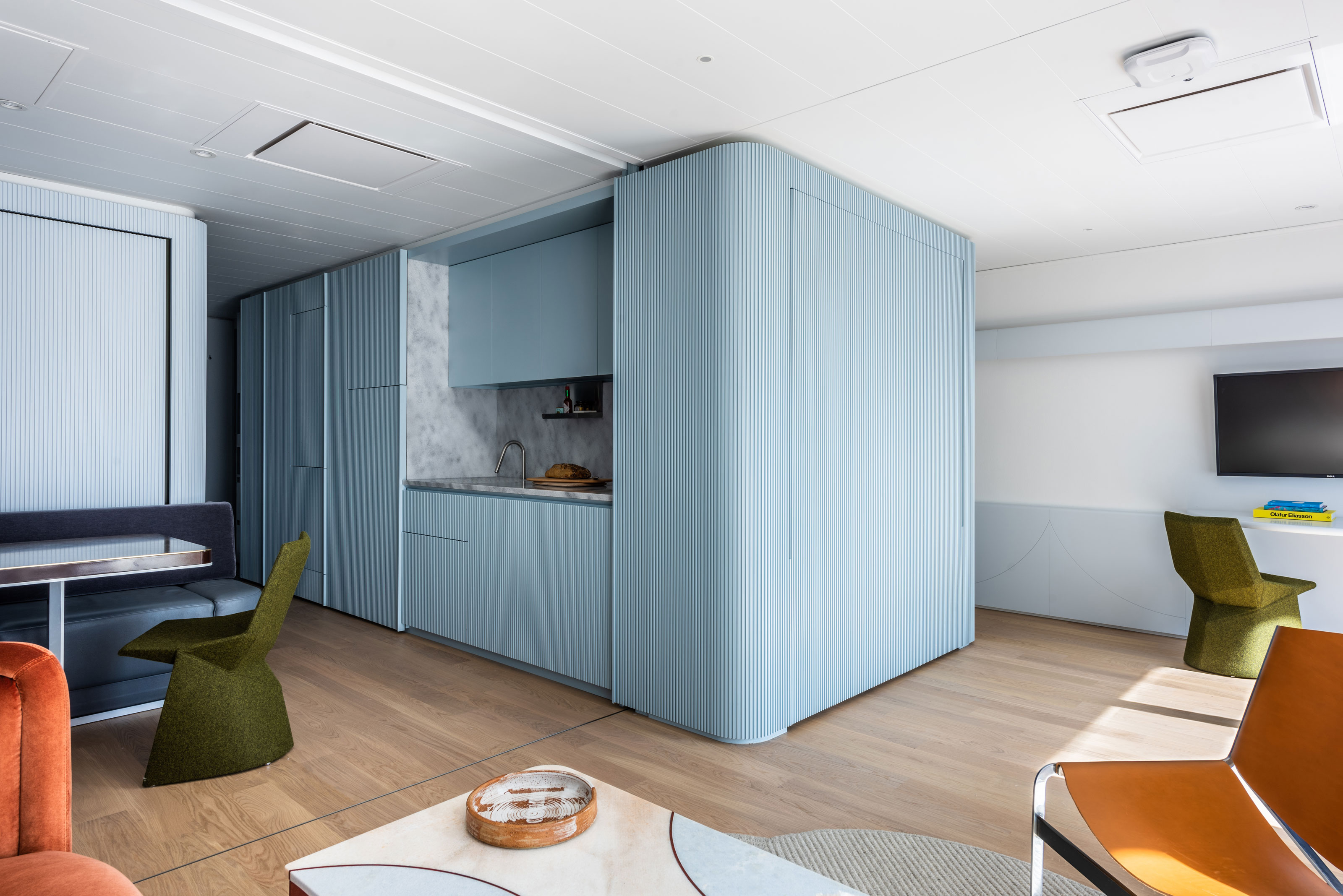
'Convertible space solutions have also come a long way,' says Ahmad. 'There are all sorts of smart solutions thanks to technology and engineering, bookshelves that separate and reveal a compact office space, murphy beds that come down on top of a full-size sofa, mirror TVs - to name just a few.'
These flexible ideas might seem like a gimmick to some, but their utility means that they're incredibly effective in adding extra features to a small space. They also have the benefit of largely being built-in, bespoke elements, meaning that you specify a custom finish and integrate them seamlessly into your space.
This studio apartment idea, created by Michael K Chen Architecture for a residential luxury yacht, is a great example. Two pull-down beds have been incorporated into the layout - one in the central volume and one over the integrated couch in the seating area. When recessed, the space is a comfortable living quarter, with only a hint that, when needed, this cabin can accommodate four people.
11. Make use of the ceiling height
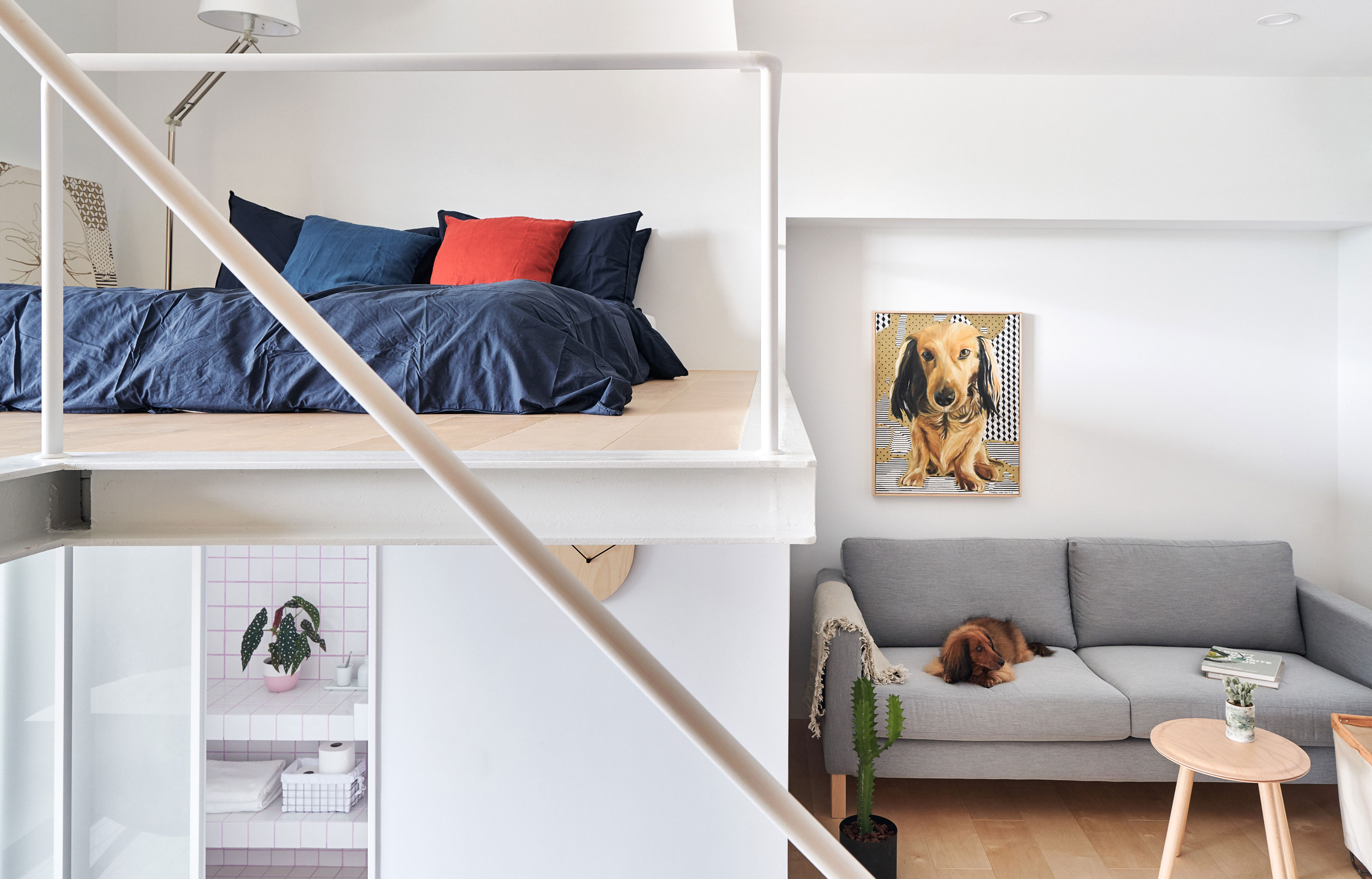
Small, but lofty apartments aren't uncommon, especially in converted industrial buildings. These are great for helping a small apartment feel spacious and open, but there might also be some untapped potential in the vertical space offering.
'Adding a mezzanine into a double-height apartment can add much-needed floor space, perhaps to create a bedroom or office overlooking a larger space,' says Simon Graham, director of Yard Architects.
However, it's important that there's enough ceiling height to install one properly. 'A 14-foot height would allow for a 6.5-foot ceiling in the space above and below, which is really the minimum for a usable room,' says Simon.
Small mezzanines are particularly well suited to creating loft bed ideas, which can help provide extra sleeping space for guests and may not require such head height to be usable.
You should also keep as much of your double-height space open as possible, as this can add to a small apartment's sense of space.
12. Create sightlines through rooms
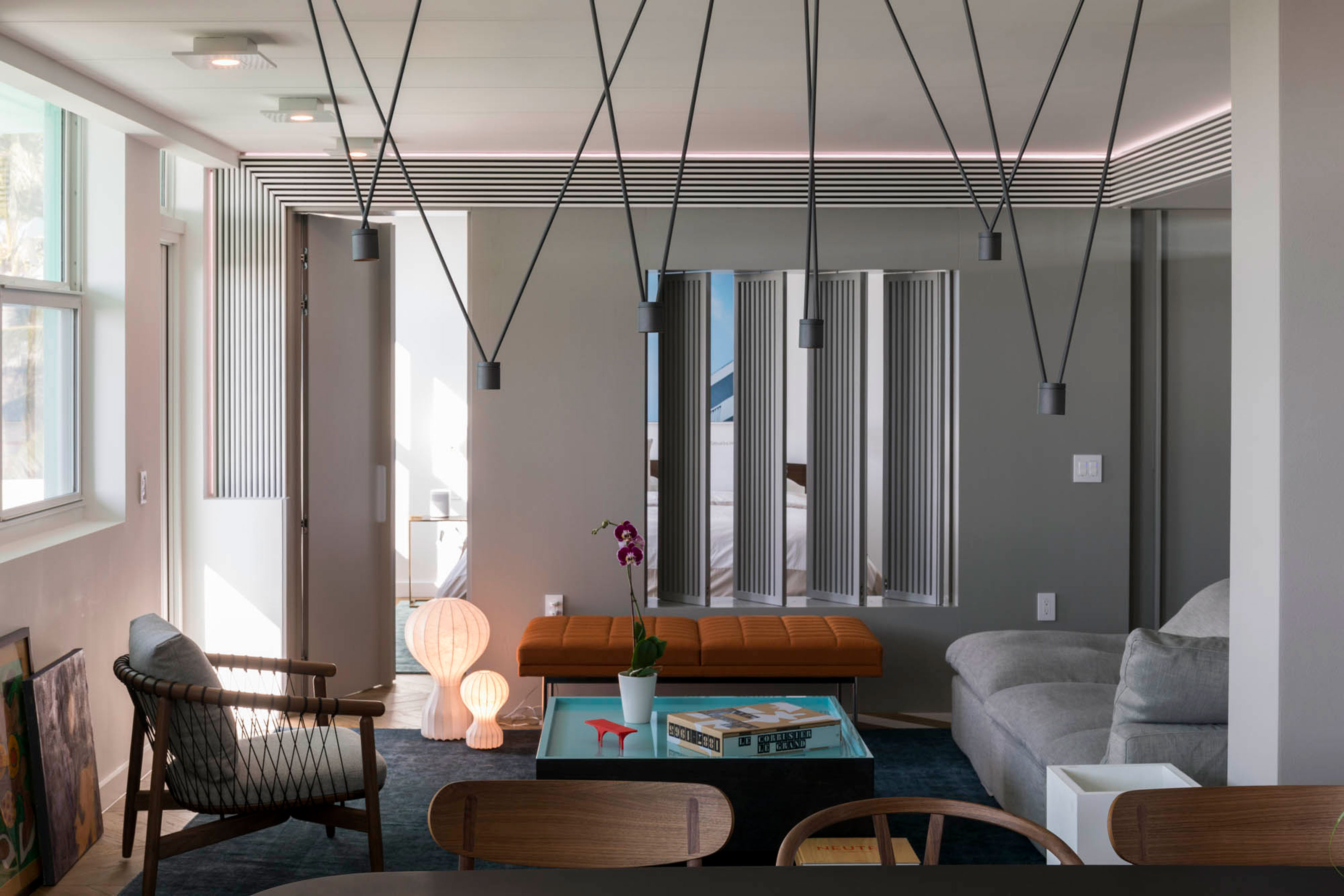
To make your small apartment feel spacious, it's going to take every room playing its part. Creating a layout that allows for vistas through the apartment is a great way to really emphasize the space you have. If you're not changing the layout, decorating in a way so as to not block the view into a room with a large piece of furniture like a wardrobe is a good idea.
As an extreme example, this Florida apartment created by Doo Architecture uses an adjustable louver to create a view through to the main bedroom. This is the perfect small apartment living room idea, as the main space also benefits from the natural light the bedroom has to offer from beachfront views, while ensuring it can be kept a private space when needed.
13. Disguise doors in an open living space
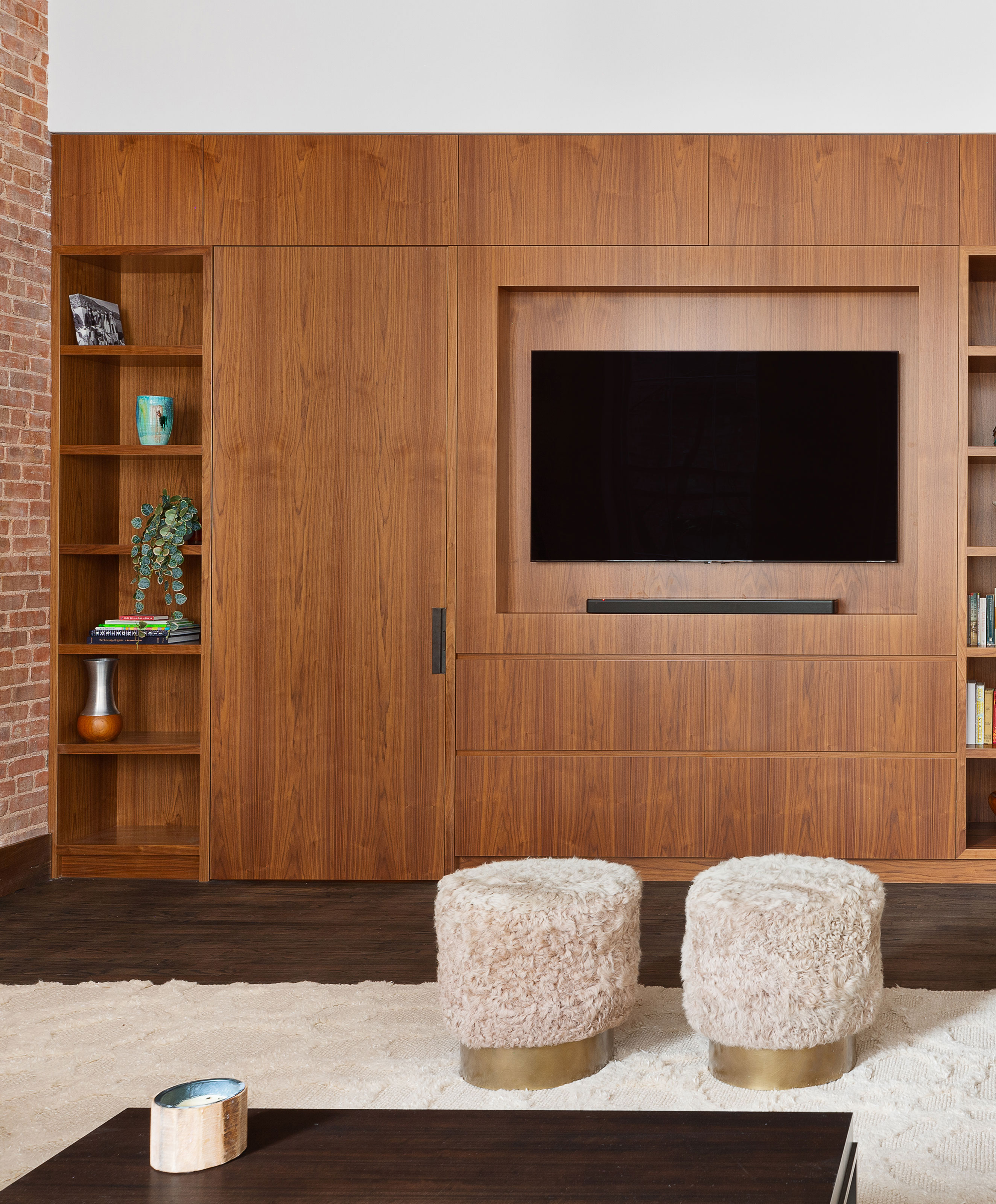
In a small, open-plan apartment, it can quickly start to feel like a corridor if you have several rooms leading off the main space. Doors created visual noise that is far from ideal when you've only got a tiny amount of space to work with. So, why not camouflage them into your decorating scheme?
Painting them the same color as the walls is an easy way to do this, especially for less decorative doors, which will simply fade into the background. However, we also love this idea by architect Kimberly Peck to disguise a bedroom door that opens out into the main apartment living room, by using the same material as the millwork.
'Before this renovation, the door to the guest bedroom was often left open and the view into the guest room felt very prominent from the living room sitting area,' explains Kimberly. 'Our solution to minimize this condition was to create a flush walnut door that when closed appears to be a panel of the living room built-in.'
14. Factor built-in seating into your design
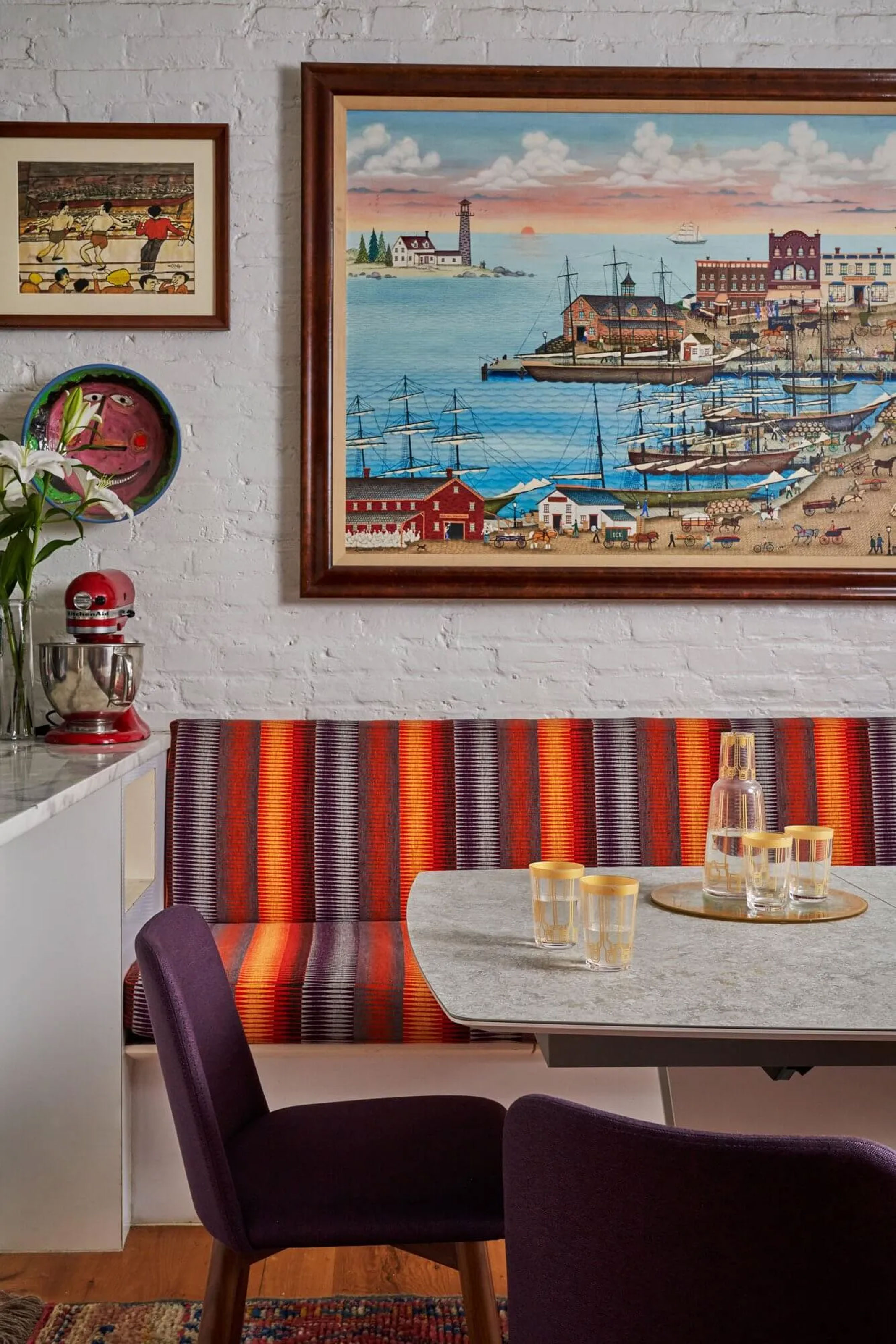
A dining table isn't always a priority for a small apartment, especially where you have more casual dining areas like a breakfast bar. However, it's nice to have sit-down dining as an option, and there are ways to squeeze a dining table into the most miniature of spaces.
One of these bright ideas is to use built-in or banquette seating. As it's wall-mounted, you don't have to worry about leaving space to pull out and push in chairs, meaning that the table can actually sit closer to the wall. It's also a great solution for squeezing a few more people around the table, making it better for creating a flexible entertaining space.
In this Chelsea apartment, designed by PROJECT AZ, banquette seating upholstered in pretty fabric makes for the ideal small dining idea inserted alongside the kitchen.
15. Make built-in furniture part of the background
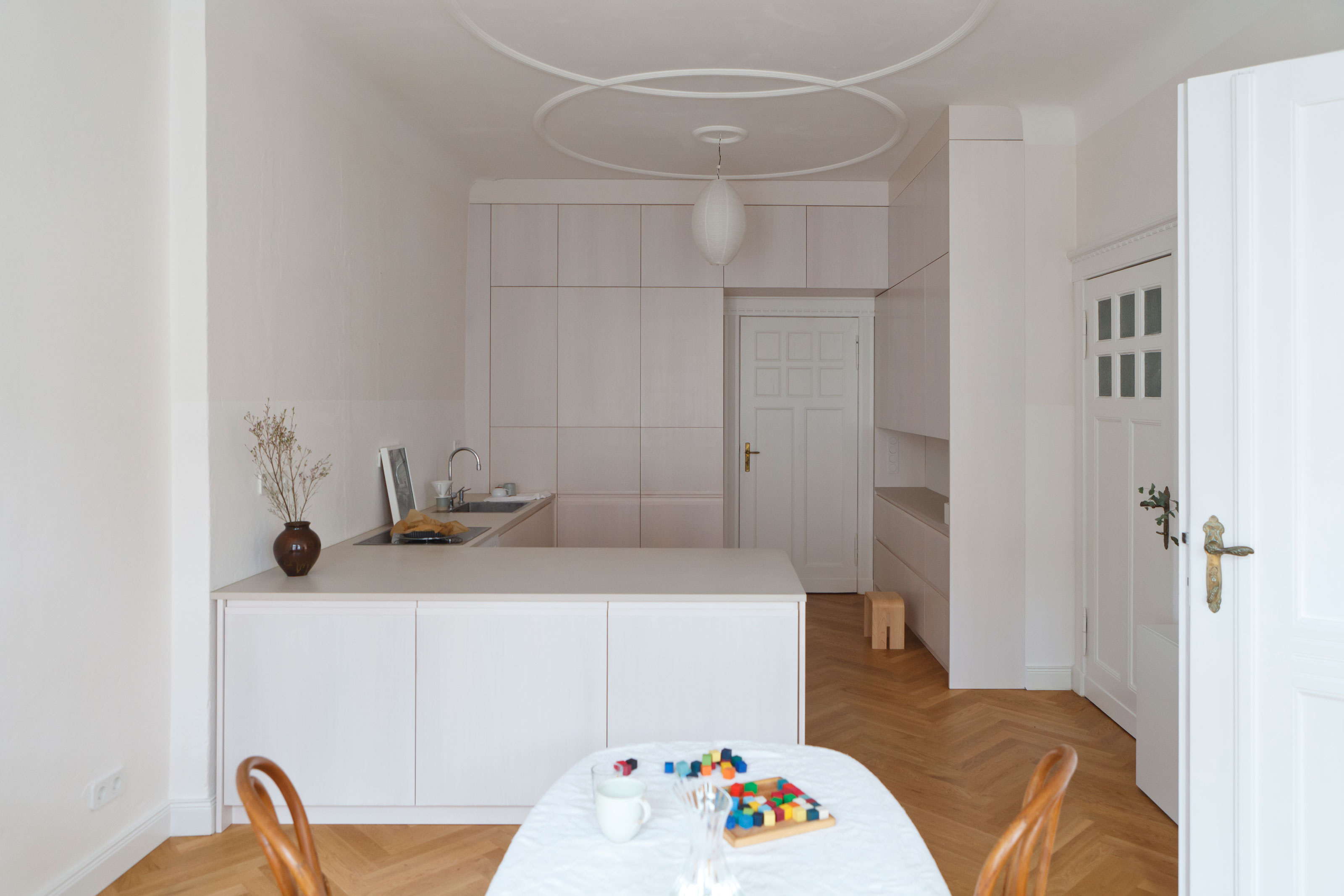
Where you do use built-in furniture, give a thought to the effect it'll have on the rest of the room, especially when building from floor to ceiling. A contrast color may seem like a good idea, but it may make storage more of a feature of your space than you actually intend.
'In a small apartment, built-in components should be visually restrained and not bulky,' says Lea Korzeczek, co-founder of Studio Oink. 'In this design, it was important to us that they didn't pull focus.'
By choosing an off-white wood that matches in with the walls, the extensive built-in cabinetry which gives this small apartment plenty of storage, doesn't dominate the space. Instead, it feels modern and minimal.
16. Go large with furniture choices

'Sometimes in a smaller space, the tendency is to want to keep everything in the space compact so as to not overwhelm,' says Amanda Thompson, New York-based interior designer and founder of ALine Studio, 'but this can create the opposite effect and make a small apartment feel very cluttered.'
'Instead opt for 1-2 larger pieces, for instance a large sectional couch or even a very large piece of artwork. This will make the space feel larger and more open than it is.'
A sectional is a great choice for a small apartment, creating a more intimate sitting area when entertaining than a linear sofa can.
How do I plan a small apartment design?
When you're dealing with a small apartment, being sure that your furniture and decision choices will both fit and not create awkward spaces will help you to prevent buyer's remorse.
'It's good to be able to show scale on site,' says designer Ahmad AbouZanat. 'That could be taping the floor where the furniture or new walls are going, or stacking some empty boxes to imitate the furniture's volume.'
Before you decide on a layout or any purchases, consider what a day in the life could look like living in the space. This should drive you in the right direction and help you to create a functional space that you'll enjoy for a long time.
'A pretty and non-functional space is like a gorgeous pair of shoes that hurt your feet,' says Ahmad. 'It'll be both painful when you use it and painful that you can’t use it as much as you'd like.'

Hugh is Livingetc.com’s editor. With 8 years in the interiors industry under his belt, he has the nose for what people want to know about re-decorating their homes. He prides himself as an expert trend forecaster, visiting design fairs, showrooms and keeping an eye out for emerging designers to hone his eye. He joined Livingetc back in 2022 as a content editor, as a long-time reader of the print magazine, before becoming its online editor. Hugh has previously spent time as an editor for a kitchen and bathroom magazine, and has written for “hands-on” home brands such as Homebuilding & Renovating and Grand Designs magazine, so his knowledge of what it takes to create a home goes beyond the surface, too. Though not a trained interior designer, Hugh has cut his design teeth by managing several major interior design projects to date, each for private clients. He's also a keen DIYer — he's done everything from laying his own patio and building an integrated cooker hood from scratch, to undertaking plenty of creative IKEA hacks to help achieve the luxurious look he loves in design, when his budget doesn't always stretch that far.